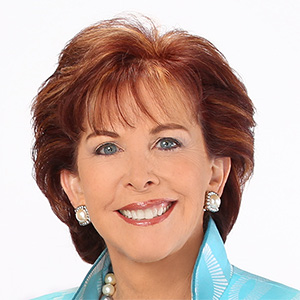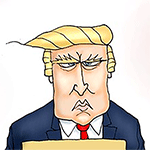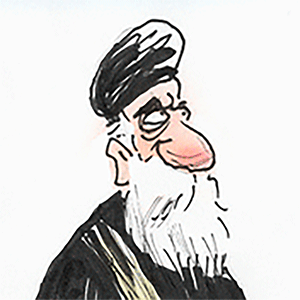Apple renews fears about tariffs, China slump with wobbly report
Published in Business News
Apple Inc.’s much-awaited quarterly earnings report failed to soothe investor concerns about its biggest challenges, including escalating tariff costs and a slowdown in China.
The company’s shares declined as much as 4.2% in late trading Thursday after Apple released second-quarter results that included worse-than-expected sales in China. The iPhone maker also warned that tariffs will increase costs this quarter, a sign that geopolitical tensions are taking a growing toll on the world’s most valuable business.
Apple expects $900 million in higher costs from tariffs in the current period, Chief Executive Officer Tim Cook said during a conference call. Revenue will increase by a percentage in the low- to mid-single digits in the quarter, compared with a 5% average analyst estimate. The company didn’t offer any guidance on the impact of tariffs beyond the current period.
“We will manage the company the way we always have, with thoughtful and deliberate decisions, with a focus on investing for the long term,” Cook said during the call.
Sales from China, meanwhile, fell 2.3% to $16 billion in the second quarter, which ended March 29. Analysts had predicted $16.83 billion. That shortfall is an ominous sign for what was once a growth market.
Apple has lost ground to local phone brands, such as Huawei, Xiaomi and Oppo, and the government there banned foreign-made technology from some workplaces. Apple’s China-centric production also makes it especially vulnerable to tariffs announced by the Trump administration.
The company is struggling in AI as well, especially in China, where its Apple Intelligence platform isn’t yet available. And the brand is increasingly seen as behind the times by consumers in China, where competitors have rolled out foldable devices.
Apple is preparing to launch its AI services in China in the coming months — relying on partners Alibaba Group Holding Ltd. and Baidu Inc. — and a foldable iPhone is due next year.
As part of the quarterly report, the company announced plans to increase its share buyback program by $100 billion and boost the quarterly dividend 4% to 26 cents a share. Apple shares had been down 15% this year through Thursday’s close.
Overall sales gained 5% to $95.4 billion last quarter, above the $94.6 billion average estimate. Apple had projected percentage growth in the low- to mid-single digits. Earnings came in at $1.65 a share in the second quarter, compared with an average estimate of $1.62.
Apple sold $46.8 billion worth of iPhones in the period, exceeding estimates of $45.9 billion. Still, that’s up less than 2% from $46 billion in the year-earlier quarter and compares with $51.3 billion in the same period two years ago.
The latest flagship iPhones aren’t markedly different than the prior models and mostly offer the same AI features as the iPhone 15 Pro from 2023. That’s given consumers less reason to upgrade.
The company debuted the iPhone 16e during the quarter, replacing its low-end $429 SE model. That phone’s $599 price is higher than competitors’ offerings — something that may have deterred some shoppers. Later this year, the company is planning more significant iPhone upgrades, including a skinnier design. Cook praised the company’s homegrown C1 modem chip, which is part of the 16e, saying the new component is the beginning of a “journey.”
The company has been contending with a range of challenges — beyond the looming tariffs. Apple shuffled AI management in recent weeks, and it’s under mounting regulatory pressure in the EU and its home country. On Wednesday, a federal judge demanded that the company open up its App Store to third-party payment options and stop charging commissions on outside purchases.
Services, which includes the App Store and Apple TV+, grew 12% to $26.7 billion last quarter — in line with estimates. That business is under threat in a few areas, though. This week’s App Store ruling is poised to hurt the platform’s revenue. And the U.S. government is trying to break up Apple’s lucrative search deal with Alphabet Inc.’s Google.
The company didn’t provide guidance on future services growth due to “uncertainty.”
The Mac division, which launched new MacBook Air and Mac Studio models during the quarter, generated $7.95 billion in revenue. That beat estimates of nearly $7.8 billion.
The iPad accounted for sales of $6.4 billion, topping projections of about $6.1 billion. In March, the company rolled out a refreshed low-end iPad as well as iPad Air models with faster M3 processors. It’s planning to introduce a new iPad Pro with an M5 chip as early as the end of this year, Bloomberg News has reported.
The company’s Wearables, Home and Accessories category, which has struggled in recent quarters, generated $7.52 billion in sales. That missed an average estimate of $8.05 billion.
Tariffs remain one of the biggest question marks. Though Apple is likely to sidestep the 145% China levy that the administration originally proposed, new tariffs on electronics are still coming. The turmoil threatens to upend the company’s supply chain and potentially force it to raise prices.
Cook said during the call that he had nothing to announce about possible price increases.
Already, Apple is looking to make more of its U.S.-bound iPhones in India rather than China. That country is now fulfilling half of U.S. demand, Cook said. He said that the majority of production for Apple Watches, AirPods, iPads and Macs sold in the U.S. will be made in Vietnam, which has a lower tariff level than China.
Highlighting the tariff concern, Apple cited “trade and other international disputes” in the list of risks and uncertainties in its quarterly report. That’s something it typically mentions in its annual filings.
But the Cupertino, California-based company got one boost from the tariff threats in the current quarter: Customers flooded Apple retail stores to buy new iPhones and other products out of fear that price hikes were coming.
Those sales would show up in the June quarter. Cook said the tariffs didn’t create extra demand in the March quarter, and he’s unsure of the precise impact in the current period.
The Apple CEO sidestepped questions about bringing additional manufacturing to the U.S. But he touted that the company will use tens of millions of U.S.-made device processors this year.
Cook also defended the company’s AI strategy. He was asked about delays to a new version of the Siri voice assistant and said the company needed more time to work on the features so they meet Apple’s “high-quality bar.”
“We are making progress,” he said. “And we look forward to getting these features into customers’ hands.”
©2025 Bloomberg L.P. Visit bloomberg.com. Distributed by Tribune Content Agency, LLC.












Comments